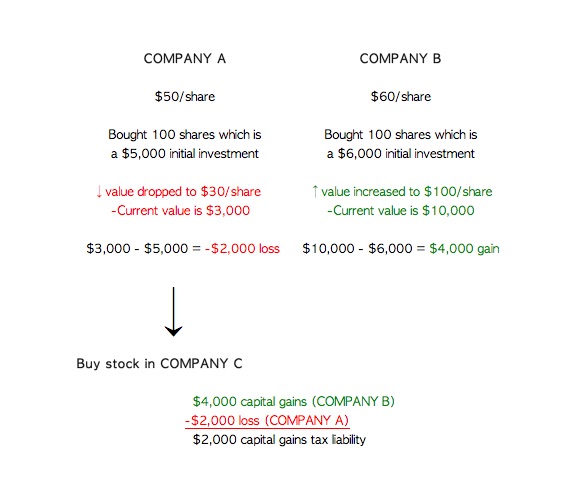Last Updated May 8, 2020
Did you know one of the best ways to create wealth is through the stock market? But you need to have a long term commitment. Find out 3 easy long term stock investment strategies you should use to get the most return on your investment. Let’s start by going over some stock market basics.
Stock Market Basics
What Is A Stock?
A stock represents ownership in a company. Companies issue stocks as a way to raise money to invest in their business. When you own stock in a company, you are called a shareholder because you share in the company’s profits.
What Is The Stock Market And How Does It Work?
The stock market is where you go to buy and sell stocks. Public companies sell their stock through a stock market exchange. There are many exchanges throughout the world, but the largest two ⎯ the Nasdaq and the New York Stock Exchange ⎯ are in the United States.
The stock exchanges track the supply and demand of each company’s stock, which directly affects the stock’s price. Investors can then buy and sell these shares among themselves through stockbrokers.
Why Should I Invest In The Stock Market?
You should invest in the stock market because the returns, on average, outpace those of other investments, such as bonds or commodities. Stock market investing is an excellent way to make sure your investments do better than inflation.
If you don’t invest your money, your money will eventually lose value because of inflation.
How To Make Money In The Stock Market?
There are two main ways you make money in the stock market:
- The value of your stocks go up. If the value of your stock goes up while you own it, you can sell it at a profit.
- Dividend payments. Dividend payments are when a company distributes some of it’s profit to its shareholders.
Keep in mind, however, that not all stocks pay dividends.
3 Long Term Stock Investment Strategies
As a beginner, I recommend starting slow. You can consider using one or all of the following long term stock investment strategies to reduce your risk and increase your returns.
1. Dollar-Cost Averaging
The first technique you can use as a long term stock investment strategy is dollar-cost averaging.
Dollar-cost averaging is an investment technique where you buy a fixed dollar amount of a particular investment on a regular schedule, regardless of the share price. This technique is best as a long-term strategy.
Dollar-cost averaging minimizes risk from market fluctuation. This is because you buy more shares of an investment when the price is low, and fewer shares when the price is high.
This can result in paying a lower average price per share over time. It also prevents you from trying to time the market because you are constantly buying on a regular schedule.
With dollar-cost averaging, you can reduce market risk and build your investments over time—regardless of where the market is going.

I personally use Robinhood to purchase individual stocks and implement this strategy. Every month I automatically transfer money to my Robinhood account and buy stocks in companies I believe in.
I like this website and app because you can buy and sell stocks for FREE—there are no commissions or fees. Most other brokerage firms charge at least a $4.95 fee per trade, and some have hidden fees.
Sign up today and you and I can get a free stock like Apple, Ford, or Sprint. With Robinhood you also don’t need a minimum account balance, so you can get started right away.
2. Portfolio Rebalancing
The second long term stock investment strategy is regularly rebalancing your portfolio. Rebalancing is when you sell and buy assets in your portfolio to match your asset allocation plan.
For example, say you originally assigned 70% or your portfolio to stocks and 30% to bonds. If your stocks performed well during that year, it could increase the percentage of stocks in your portfolio to 80%.
Therefore, you may want to sell some stocks and buy bonds to get your portfolio back to the original target allocation of 70:30.
Why Rebalancing Is So Important

You may wonder “Why would I want to rebalance my portfolio and sell my stocks if they’re doing great?” The short answer is because rebalancing reduces your risk.
You want to take profits from your winners from time to time. By allowing your stock ratio to continue to climb, to say 90:10, your portfolio becomes riskier.
Remember stocks are riskier than bonds because of the wild swings in the market. By rebalancing your portfolio, although you give up some of the upside, you minimize your loss during the downside of a market.
Another benefit to rebalancing is you’re profiting off gains from your winning investments while paying lower prices for underperforming ones—whether the winning investments are on the stock side or the bond side.
It forces you to buy low and sell high, which is how you make money in investing.
When You Should Rebalance Your Portfolio

You may ask, “When do I know it’s time to rebalance?” A good rule of thumb for the long-term stock market investing is you want to rebalance annually.
If you are closer to retirement, you may want to rebalance quarterly or when an asset class weight has changed more than 5%.
This technique can be automatically set up for you with most robo-advisors.
A robo-advisor is an online automated advisor. They will invest your money for you based on your specific goals using computer algorithms.
Since robo-advisors are cheaper than what you would pay a human financial advisor, it is a great low-cost option for investing.
A great option to use if you’re just getting started is Acorns. I recommend Acorns for beginners because of its round-up feature. The way it works is you link your checking accounts and credit cards to Acorns and they will round every transaction up to the nearest dollar and invest it.
So let’s say you spent $8.17 at lunch. Acorns will round up that transaction to $9 and invest the $0.83. All your spare change starts to add up and before you know it you’re saving and investing. This is perfect for the person who also has trouble saving.
If you don’t think Acrons can work for you, you can also find a list of other robo-advisors HERE to determine what works best for you.
3. Tax-Loss Harvesting

The third long term stock market investing technique I recommend you consider is tax-loss harvesting.
If you have a stock that goes up in value, you have to pay capital gains tax on the profits once you sell it. To reduce the amount of taxes you have to pay on your gains, you can use a strategy called tax-loss harvesting.
Tax-loss harvesting is the selling of securities (like a stock or bond) at a loss to offset a capital gains tax liability.
In other words, you would sell a stock or a bond at a loss to reduce your tax bill.
With tax-loss harvesting, an investment that has an unrealized loss (only shows a loss on paper) is sold to allow a credit against any realized gains (actual gains) in your portfolio.
The asset sold is then replaced with a similar asset to maintain the portfolio’s asset allocation.

Example of Tax-Loss Harvesting:
That may sound complicated, so let me give you an example to help explain the concept.
Let’s say you bought 100 shares of stock in company A at $50 per share (which is an initial investment of $5,000). Assume you also bought 100 shares of stock in company B at $60 per share (which is an initial investment of $6,000).
Two years later the stock in company A is worth $30 per share (now your investment is worth $3,000), and the stock in company B is currently worth $100 per share (now your investment is worth $10,000).
When you sell your shares in company B, you would have to pay taxes on your realized gain of $4,000 ($10,000 current value – $6,000 initial value = $4,000).
To tax-loss harvest, you would sell those 100 shares in company A, thereby recognizing your $2,000 capital loss ($3,000 current value – $5,000 initial value = -$2,000).
You can use your $2,000 loss from company A to offset the $4,000 capital gains you realized that year from company B.
So instead of paying taxes on $4,000, you would have to pay taxes on $2,000.
You would then use the proceeds from the sale of company A (the $3,000) to purchase stock in company C (a different but similar company) as a replacement of company A in your portfolio.

Be Careful With “Wash Sales”
One thing to watch out for is “wash sales.” Wash sales occur when you sell or trade stock or securities at a loss and buy substantially identical stock or securities within 30 days before or 30 days after the sale.
You don’t want to inadvertently participate in a “wash sale.”
This IRS rule is in place to prevent people from gaming the system.
Basically, it says that I can’t sell stock in company A and then immediately buy it back again just to get the tax benefit. If I do so, the loss will be disallowed.
I am, however, allowed to claim the loss if I sell one stock (company A) and buy another one in the same industry (company C)—just not stock in the same exact company as before.
When Tax-Loss Harvesting Doesn’t Work
The primary purpose of tax-loss harvesting is to defer income taxes—it doesn’t eliminate them.
For example, if you re-buy 100 shares of company A at $35 per share (30 days after you sold it to eliminate a “wash sale”), and the value of the shares in company A grows to $75 per share in the future, you would now owe taxes on capital gains of $4,000 ($7,500 current value – $3,5000 initial value = $4,000) instead of $2,500 ($7,500 current value – $5,000 initial value = $4,000) if you never sold the stock before.
With tax-loss harvesting, you get a tax break today and put off paying taxes on future gains until later. The higher your tax rates now, the better the benefit.
So big beneficiaries include higher-income investors or investors in high-tax states such as California and New York.

Tax-loss harvesting is not beneficial if you think you will be in a higher tax bracket in the future, or you think the capital gains tax rate will increase in the future.
Please note tax-loss harvesting is a strategy that you only apply to taxable investment accounts—it does not apply to IRAs or other tax-sheltered accounts.
Finally, I wouldn’t recommend selling securities at a loss just for tax purposes.
When looking for tax-loss selling options, consider selling the following investments:
- That no longer fit your investment strategy;
- Have poor projections for future growth; or
- It can be easily replaced by other investments that fill a similar role in your portfolio.
Since tax-loss harvesting could be very complicated, I recommend consulting with a financial advisor or tax professional knowledgeable in this area.
Summary
When deciding your long term stock investment strategies, consider using these 3 investment techniques: dollar-cost averaging, portfolio rebalancing, and tax-loss harvesting.
These techniques will reduce your risk, increase your returns, and reduce your tax bill. You can implement these strategies picking your own stocks with a platform like Robinhood, or using robo-advisors like Acorns.
Finally, you can track how your stocks are doing with a FREE Stock Investment Tracker that can be found in my Resource Library.
Related Articles:
- Best Ways To Start Investing For Beginners: Investing 101
- Best Ways To Invest In The Stock Market For Beginners
- What To Do When Stocks Go Down? (This Is What I Did)
If you want to remember this article, pin it to your favorite Pinterest board.














2 Comments on Stock Market Basics: 3 Simple Long Term Stock Investment Strategies